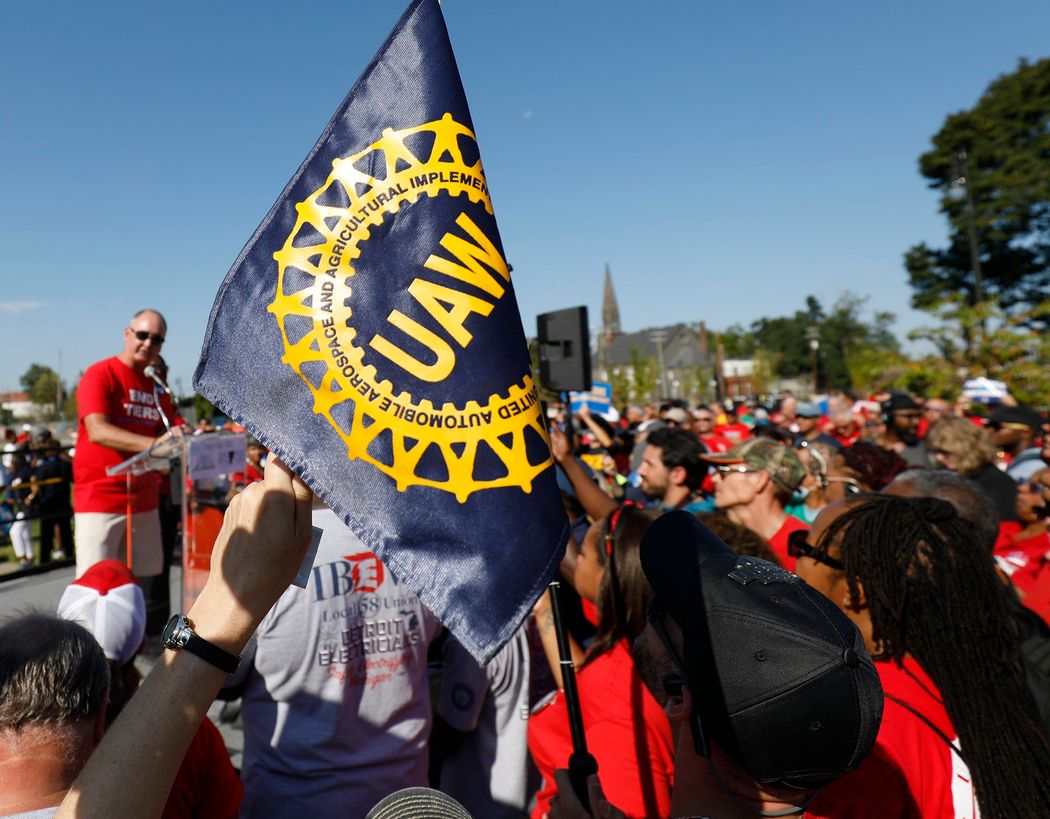
Greg Volynsky is a student at Harvard Law School.
In Today’s News & Commentary, United Auto Workers strike against the Big Three.
For the first time in its 88-year history, the United Auto Workers (UAW) union has called a strike against all three Detroit automakers simultaneously. On Friday, roughly 13,000 U.S. auto workers walked off the job, due to a significant divide between the union’s contract demands and the offers of Detroit’s three major car manufacturers. The UAW called the strike “our generation’s defining moment . . . across the entire working class”, while Reuters called it “the most ambitious U.S. industrial labor action in decades.”
In an “absolutely unprecedented” move, the UAW has engaged in a limited “Stand Up Strike”, involving—for now—fewer than 10 percent of the union’s nearly 150,000 members. The union explained that “[t]his is a strike that grows over time, giving our national negotiators maximum leverage and maximum flexibility.” By calling a limited strike and targeting plants producing vehicles with lower profit margins, the UAW is mounting pressure without cornering the companies or squeezing its own strike fund. Professor Marick Masters of Wayne State University in Detroit summarized, “You put an animal in the corner and it’s dangerous.”
The UAW is demanding a 36 percent wage increase over four years, having conceded the initial demand of a 46 percent raise. After initially proposing around 9 or 10 percent four-year raises, GM and Ford have proposed 20 percent, while Stellantis has offered a 17.5 percent. Beyond wage increases, the UAW is advocating for the restoration of cost-of-living pay raises, elimination of varying wage tiers, a 32-hour four-day workweek, pension boosts, and other benefits.
The strike comes four years after a 40-day GM strike, involving 48,000 workers, that cost the company $4 billion. Moody’s Analytics estimates a six-week strike could cost each of the companies $5.4 billion. When the companies said they cannot afford the wage increase the union demands, UAW President Shawn Fain responded, “The cost of labor that goes into a vehicle is 5%. They could double our wages, not raise prices of vehicles, and they would still make billions.” The three automakers reported a combined $250 billion in profits over the past decade.
The strike is led by Fain, who was an electrician and UAW member for two decades before being elected to lead the organization in late March of this year. As Swap reported, Fain advocated for a more aggressive negotiating strategy, running on a platform of “No corruption. No concessions. No tiers.”
Roughly 97 percent of union members voted to authorize a strike in late August. As I reported earlier this month, the UAW filed a labor complaint against GM and Stellantis, alleging they failed to bargain in good faith as the union contract neared expiration. Fain termed threats of plant closures “economic terrorism.”
President Biden is expected to deliver remarks on the strike. The White House said President Biden has been in touch with Fain and leaders of the auto companies. As Michelle reported yesterday, the Biden administration may take “economic measures” to protect the Big 3’s smaller supplier firms and prevent supply chain disruption.






Daily News & Commentary
Start your day with our roundup of the latest labor developments. See all
January 5
Minor league hockey players strike and win new deal; Hochul endorses no tax on tips; Trump administration drops appeal concerning layoffs.
December 22
Worker-friendly legislation enacted in New York; UW Professor wins free speech case; Trucking company ordered to pay $23 million to Teamsters.
December 21
Argentine unions march against labor law reform; WNBA players vote to authorize a strike; and the NLRB prepares to clear its backlog.
December 19
Labor law professors file an amici curiae and the NLRB regains quorum.
December 18
New Jersey adopts disparate impact rules; Teamsters oppose railroad merger; court pauses more shutdown layoffs.
December 17
The TSA suspends a labor union representing 47,000 officers for a second time; the Trump administration seeks to recruit over 1,000 artificial intelligence experts to the federal workforce; and the New York Times reports on the tumultuous changes that U.S. labor relations has seen over the past year.